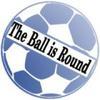“The only thing that will redeem mankind is co-operation” – Bertrand Russell
Back in December 2009, Arsene Wenger, a man seen by many as a guardian of football purity, came out with the ridiculous idea of replacing throw-ins with kick-ins. When asked for his thoughts on how the game could be improved, he came up with the idea of abolishing throw-ins. In no other part of play are outfield footballers allowed to handle the ball, he argued, and using kick-ins as a way of restarting would be quicker and more logical. Unsurprisingly, his idea was derided with many “experts” suggesting that it would make the game worse, rather than better. But few will remember the summer of 1994 when this rule change was actually made reality for a short time.

In that graveyard shift after a heavy lunch of Rosti they revealed their plans to revolutionise our beautiful game. First up was the agreement that the Golden Goal would be used in the forthcoming FIFA World Cup in the USA. And then came the radical idea to replace the throw-in with the kick-in. You can imagine the scene around the table as the rest of the room picked their jaws up off the floor and sniffed the water to see if it had been swapped with vodka.
But FIFA were deadly serious. The vote was passed on the proviso that it would be trialled in a number of leagues and volunteers were sort. Of course the FA, playing goody two shoes, but both hands up and agreed that they would take part in the trial.

Terry opens the letter and reads the contents, dropping his Caramel into his tea. The league had been chosen to be one of the “trial” leagues that would be replacing throw-ins with kick-ins. Checking the date of the letter to make sure it wasn’t 1st April, he read on:-
“A kick may replace a throw-in”, “The ball must be stationary before a kick is taken”, “A player cannot be offside from a kick-in”, “a goal cannot be scored from a kick-in”. From the outset any fool could see how it would change the game for the worse.
The Diadora League would be the English FA’s guinea pig. During pre-season training clubs concentrated on a different style of play, giving life to the oft-maligned target man style of play. Teams would launch the ball as far upfield as possible from a kick-in, knowing that they couldn’t be caught offside. The kick-in in the final third became more potent to the attacking side than a corner kick.
Ironically during the 1994/95 season Tony Pulis was out of work as a manager, and spent many a Saturday watching the games at this level, forming a favoured strategy that he applied right up until the day he left Stoke City a few months ago.
At the end of March 1995, each club was asked to complete a questionnaire on the success of the trial. The results were taken by the FA to the next IFAB meeting at Turnberry hotel in April where the “experiment” was discussed. Unsurprisingly, the idea was banished to the filing cabinet marked “stupid ideas” along with the Anglo-Italian Cup, the string for a cross bar and Malcolm McDonald’s England career.
For Terry, this would be the final nail in his footballing coffin, bowing out at the end of the season with a game against Chelsea, featuring such players as Robert Fleck, Michael Duburry and a certain Anthony Barness who would go onto captain Lewes a decade later. But there is a happy ending, as Terry is back at the club as chairman, a privilege to serve on the board with.
But this whole kick-in idea? Proof surely that Wenger isn’t as clever as people think he is.

